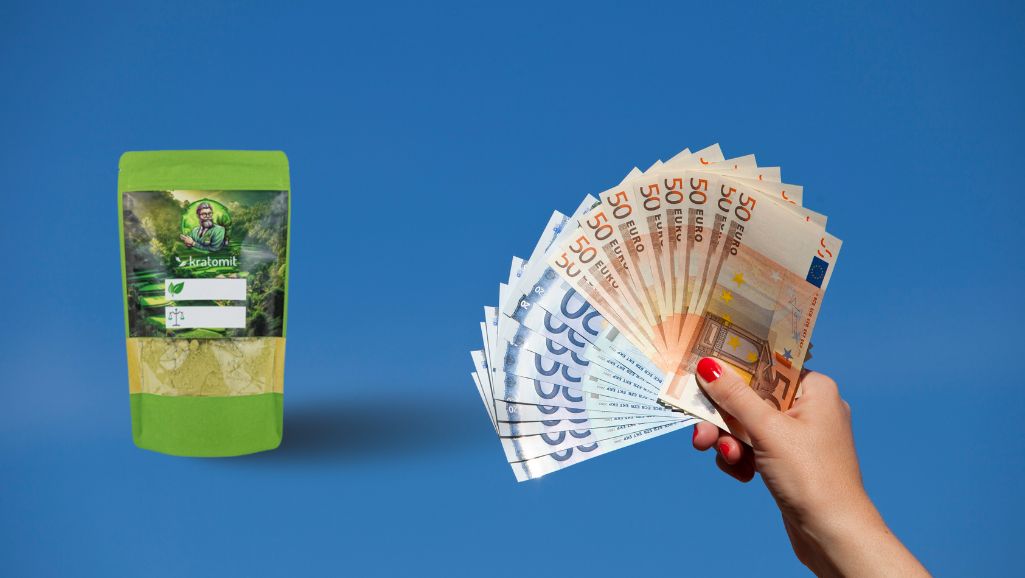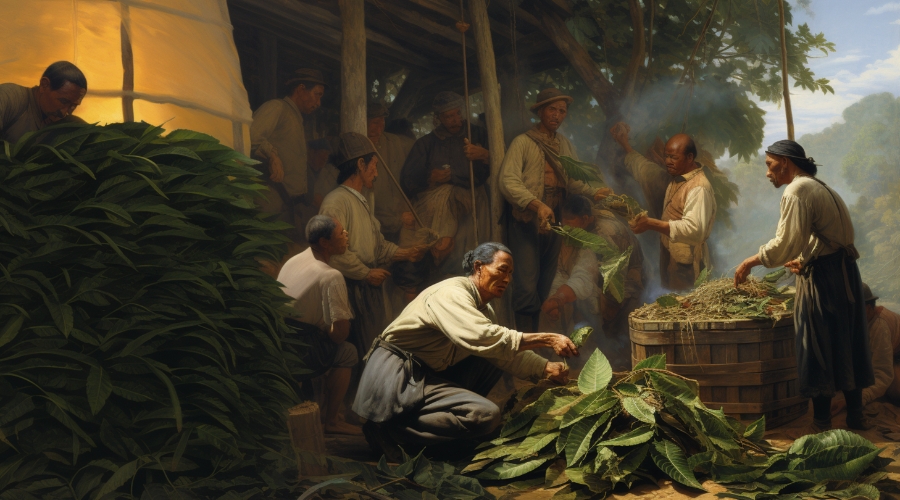Have you ever heard of Kratom, a fascinating plant that has many uses while simultaneously causing controversy around the world? In this article, we present six (unknown to many) facts about Kratom that might expand your knowledge of this complex plant and provide new insights into its uses and legal status.

1. Kratom leaves can be chewed, brewed into tea, or taken in capsules.
Kratom is gradually gaining popularity in the Western world, especially among young people in Europe.
Kratom leaves can be consumed in a variety of ways, allowing users to choose the method that best suits their needs and lifestyle.
You may be wondering why someone would chew raw kratom leaves? The answer is simple: chewing the leaves can cause a rapid release of potent alkaloids directly into the system.
For those who prefer a gentler method, the leaves can be dried and made into tea. This method is particularly popular as it reduces the potentially bitter taste and allows users to control the dosage and strength of the drink.
In addition, kratom capsules are also available, offering a discreet and easy-to-dose alternative, ideal for those on the go or those who require precise and consistent amounts. Each of these methods has its own specific benefits and gives consumers the flexibility to tailor their kratom consumption to their personal needs and life circumstances.
.jpg)
2. The global market for Kratom is worth several billion euros.
The kratom market, which has experienced rapid growth in recent years, is now worth more than several billion euros.
The plant, known for its unique psychoactive properties, is enjoying great popularity, especially among young adults in Europe and North America who are looking for alternative ways to relax and boost their energy.
This increasing demand has led to the development of various kratom products, including powders, teas, and capsules, available both online and in stores. The growing recognition of kratom as a potential healing agent is also a key factor in the development of the market.
Studies and research point to its potential benefits, including pain relief and aiding opioid withdrawal. The European Union and national governments are therefore trying to find a balance between providing access to these potentially useful products and ensuring consumer protection.
Ultimately, it remains uncertain how the kratom market will continue to develop. Challenges such as legal restrictions and the need for more scientific evidence on the effects and safety of kratom may affect its future growth and popularity.
So how will European countries approach the regulation of this controversial plant? This question remains open and is at the heart of many political and health policy debates.

3. It contains over 40 active compounds.
Kratom is a tree botanically known as Mitragyna speciosa. It is a fascinating plant with a complex chemical composition that contains more than 40 different active compounds.
These compounds include various alkaloids that are responsible for its diverse effects on the human body. The main alkaloids are mitragynine and 7-hydroxymitragynine, which are believed to contribute to the analgesic and antidepressant properties.
But how do these substances work in a complex symphony to produce such different effects?
Interestingly, although kratom promotes physical energy and mental clarity in lower doses, it can cause sedation and analgesic effects in higher doses. This dual effect makes kratom an attractive option for those looking for an alternative to traditional pain or anxiety medications.
Scientific research into these effects is still in its infancy, but initial studies show promising results regarding kratom's effects on long-term pain and opioid withdrawal symptoms.
Although kratom's potential as a therapeutic agent is great, it also comes with challenges such as regulation and product standardization. Due to the diverse chemical ingredients, it is important to ensure the consistent quality and safety of kratom products to ensure both therapeutic benefits and consumer protection.
.jpg)
4. Thailand has legalized kratom for medicinal use.
Thailand recently took an important step in drug policy by legalizing kratom for medicinal purposes. This move reflects the growing recognition of the potential medicinal properties of kratom, which was previously banned in the country.
What were the motivations behind this change and what impact could it have on patients and the healthcare system?
Legalization comes after kratom was considered an illegal narcotic in Thailand for decades, despite its long-standing use as a traditional medicine in rural areas of the country.
Locals have traditionally used kratom leaves to treat pain, fatigue and even to wean themselves off opium. So the government's change in stance is partly a response to the scientific evidence of kratom's effects, but also to the need to reduce the enormous costs and social problems associated with the drug war.
Legalization for medicinal use allows doctors to prescribe kratom to patients who could benefit from its pain-relieving and antidepressant effects.
This is expected to provide greater control over the quality and distribution of kratom products, which could lead to greater safety and efficacy for end users. However, it also raises questions about the regulation, monitoring and education needed to ensure safe and informed consumption.
This change in the law could also impact the international view of kratom, which could lead to further revision of bans and restrictions in other countries.
It is certain that this change is a significant step towards wider recognition and possible use of kratom as a therapeutic agent.
.jpg)
5. It has long been traditionally used in Southeast Asia.
Native to the tropical forests of Southeast Asia, kratom has been used traditionally in this region for hundreds of years.
In countries like Thailand, Malaysia, and Indonesia, people have adopted the use of kratom leaves for their unique effects, which include mood elevation, energy boost, and pain relief.
How is it possible that this plant has become such an integral part of traditional medicine and daily life in these cultures? The use of kratom in daily life is deeply rooted in the region's history and culture. Farmers and laborers often chewed the raw leaves to gain the energy needed for long and physically demanding work days in hot and humid climates.
Kratom also played a role in social and religious ceremonies, where it was used as a stimulant to facilitate prolonged meditation or rituals. In traditional medicine, kratom was valued for its analgesic properties, providing a natural alternative to synthetic painkillers.
Its natural antidepressant and antianxiety effects have been used to promote mental health and general well-being. Although modern scientific research is only just beginning to confirm these traditional uses, the anecdotal evidence for its effects is strong and varied.
With growing interest in natural and alternative healing methods, kratom is now becoming more widely known internationally, sparking discussions about its legal status and regulation.
As Western countries begin to open up to kratom's potential, the plant may offer valuable lessons from its long history of use in Southeast Asia. What impact this will have on global health practice still needs further research and debate.

6. The legality of Kratom varies greatly in different countries and regions.
The legality of kratom varies widely on a global level, reflecting the different legal and cultural norms in each country and region.
While kratom is freely available and legally used for medicinal and recreational purposes in some countries, in others it is considered an illegal substance whose possession or sale can be prosecuted.
In the United States, kratom is currently at the center of debates between federal authorities and advocates who point to its potential medicinal benefits. Some states have enacted their own kratom laws, creating a complex web of regulations that can vary widely from state to state.
The situation is similarly complicated in Europe. While some countries, such as Germany and Italy, consider kratom a controlled substance, others, such as the United Kingdom, have strictly banned the sale and distribution of kratom.
These legal differences are often due to differing national drug and health policies.
These different approaches reflect not only different legal frameworks, but also the lack of globally accepted scientific evidence on the effects and safety of kratom.
In the absence of a unified scientific consensus, countries rely on individual research and political opinions, resulting in varying and sometimes contradictory laws.
As a result, kratom users must be very cautious and well informed about the legal aspects of kratom consumption in their respective countries.
.jpg)









